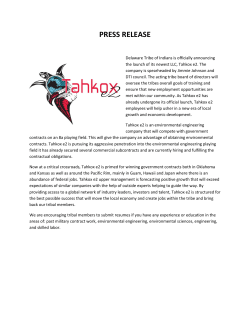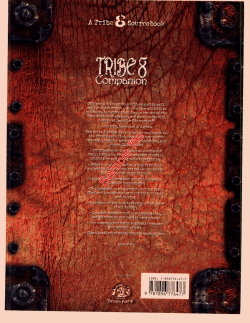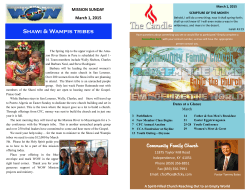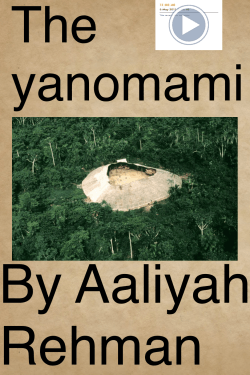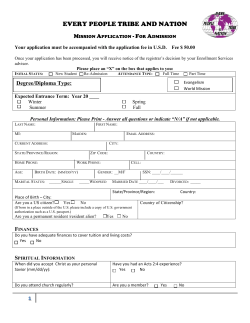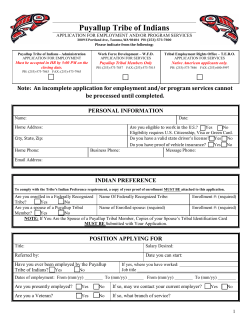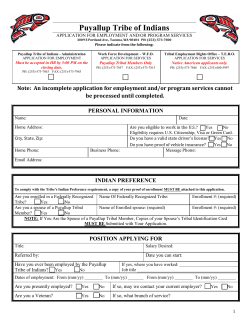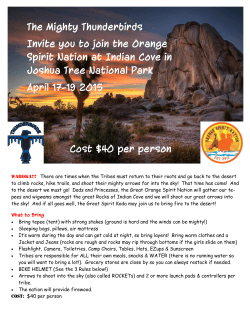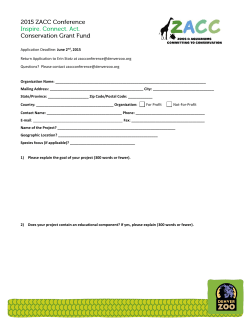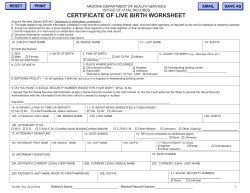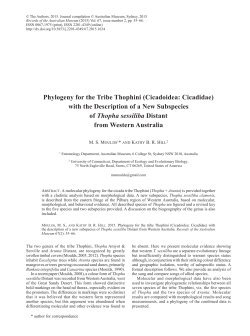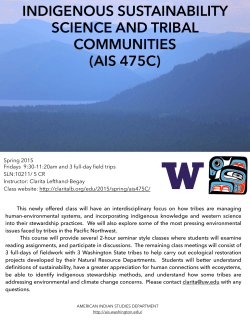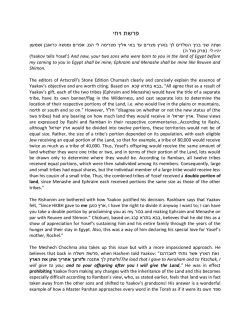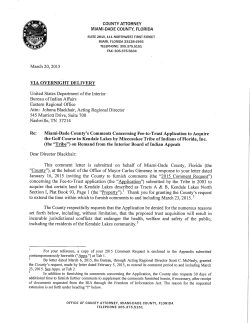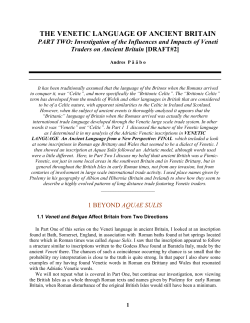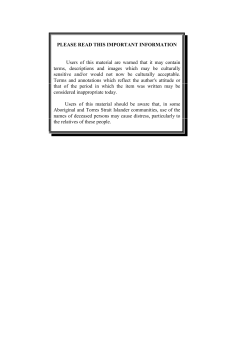
California Native Americans and their Physical Environment
California Geographic Alliance Lesson Plan California Native Americans and their Physical Environment Author: Grade: Subject: Joan Bray 4th grade History-Social Sciences & English/Language Arts California Academic Content Standards: 4.1—Students demonstrate an understanding of the physical and human geographic features that define places and regions in California and on earth. 4.1.3—Identify the state capital and describe the various regions of California, including how their characteristics and physical environments (water, landforms, vegetation, climate) affect human activity. 4.2-- Students describe the social, political, cultural, and economic life and interactions among people of California from the pre-Columbian societies to the Spanish mission and Mexican rancho periods. 4.2.1--Discuss the major nations of California Indians, including their geographic distribution, economic activities, legends, and religious beliefs; and describe how they depended on, adapted to, and modified the physical environment by cultivation of land and use of sea resources. Objectives: • • • Instructional Strategy: Students will locate, analyze, map, and chart climate, food, shelter, and items traded among the tribes of each California region. Students will gain an understanding and appreciation of the diverse geography and natural resources of California and learn how California Indians depended on and adapted to the physical environment of the land. Students will create a matrix that will compare each of the 4 regions of California & the Native Americans that occupied that region; the climate, food, shelter, and what was traded by each tribe. Working in a whole class environment, teacher will explain the directions to completing the matrix, and complete one region/tribe together using the California Atlas maps. Students will then break up into groups of four and complete the California Native American matrix using the California atlas maps. 17 California Geographic Alliance Lesson Plan Teacher Background: Teachers will need to have a significant knowledge and appreciation for the geography and natural resources of each of the four main regions of California. Teachers will need to be knowledgeable in the social and cultural interactions among the indigenous people of California and how they developed unique lifestyles based on their physical settings and natural resources available to them. Student Background: Students have previously completed their study of California regions, their locations and natural resources. The students have also completed their study of the California Indians by reading textbooks and other resources available within the classroom. This lesson would be a culminating activity for both units (Region & Native Californians). Learning Context: Students will have read their textbook, other resources available in the classroom, and been assessed on the California Regions. They will have also read their textbooks, other resources, and participated in classroom discussions on the California Native Americans. Essential Question: Why are people located where they are? Instructional Materials: California Indians matrix and directions Overhead transparency of CA Native matrix Resources: *CGA Atlas Physical Geography Map, page 12 Physiographic Regions Map, page 15 Annual Precipitation Map, page 19 Minimum January and Maximum July Temperature Maps, pages 16-17 Native Americans of 1770 Map, page 20 *4th grade social studies textbook *Other reference materials (non-fiction books on regions; California Native Americans etc.) *Internet *Literature resources Duration: 2- 40 minute class periods (See last page of lesson plans 18 California Geographic Alliance Lesson Plan for approximate layout of each day) Procedures Introduction/ Anticipatory Set: Instruction: Guided Practice: *Teacher will display examples of items found within the four regions of California, such as berries, shells, grasses, acorns, examples of wildlife, etc. Ask: How far do you think I traveled and how long do you think it took me to buy or or find these items? Allow time for students to think/volunteer answers. *Tell students there was a time in California history when people had to walk many miles in order to find the items listed above in order to eat, build homes, or even trade for items they didn’t have where they lived. Explain to students that in this portion of the lesson they will be completing a matrix that presents the four regions of California, the Native American tribes of each area, and the climate, food, shelter, and goods traded by these tribes based on their geographical setting. 1. Pass out one matrix to each student. 2. Explain to students that the teacher will model how the matrix should be set up and completed. Then students will complete the matrix working together in groups of four. 3. Teacher will model how to use the six CGA maps. Students will participate in the discussion determining the tribes, average rainfall, and average temperature. 4. Using the Physical Geography of California (p. 12) and the Physiographic Regions (p. 15) maps, determine and discuss the approximate locations of each of the four main California regions: Mountains, Desert, Central Valley, and Coast. Ask the students to describe the diversity of geography, natural resources, and climate of each area. 5. Upon determining the regions, compare the Native Americans of 1770 map (p. 20) and determine and select one tribe that lives in each region. (Using the 4th grade social studies textbook, and tribes referred to in the book, may provide the students with a good research tool, as well). Fill in tribe below each region on the matrix. 6. Next, using the Annual Precipitation map (p. 19), the Minimum January Temperatures, and Maximum July Temperatures (p. 16-17) maps of California, determine the average annual rainfall, and average temperature range for each region. 19 California Geographic Alliance Lesson Plan Complete and place the annual rainfall and temperature into the climate grid for each region. Independent Practice: 1. Considering prior knowledge of the CA regions, climate, and natural resources of each area, information gleaned from textbooks, internet, literature, or other classroom resources, students will complete the “food,” “shelter,” and the “items traded” for each section of the matrix. 2. Once students have completed the matrix, the class will break up into four groups, one for each tribe. Using poster paper, each group will brainstorm and answer the question: Why is the __________ tribe located where they are? 3. Teacher will be available for questions and guidance. Closure: *Mid-way through the second class period, bring students together. As a whole class, discuss the following questions: How did the physical environment influence such factors as where early residents lived? Why? • How did the environment affect the types of houses they built? • The food they ate? • What they were able to trade? • What natural resources from each of the four geographic regions were used by the indigenous people? *After this classroom discussion, each student will compose a 1-3 paragraph response to the following question: Critical thinking question: Do California’s physical environment, climate, and natural resources still affect 20 California Geographic Alliance Lesson Plan settlement today? If yes, how does it affect today’s settlement? If you do not think it affects settlement, explain why not. Assessment: Extension Activities: Reflection: The assessment of this lesson is integrated with the instruction and occurs throughout the lesson rather than just at the end. The focus questions, matrix, group discussions, and essay question provided a framework for the evaluation of this unit. Students will be given points for the overall project including completion, accuracy, and quality of both the matrix and essay. To enhance students’ understanding and provide poetic descriptions of California’s regions, read aloud excerpts from Sierra, by Diane Siebert. Students can create “Found Poems” using passages from the books. This was a lesson that the students enjoyed. Originally, I would explain the matrix and then the students were asked to complete the work independently. This proved to be somewhat difficult for them to do on their own. Because of this, I now choose to work through a region and tribe and the climate of the area, the food and shelter of the area, and the items they traded. This provides the students with accurate information, and guides them in gleaning information from the maps, text, and other resources. Day 1 Anticipatory Set Explain & pass out matrix Model how to use CGA maps. Complete tribe selection for each region. Complete climate (temp & precip) grid for each region. Students break up into groups (4) to complete the matrix, for their region. Day 2 Students meet together with tribe group and brainstorm on poster paper. Students return to table group to present information about their tribe. Closure Students will write a 1-2 paragraph response to Critical Thinking Question. 21
© Copyright 2025
